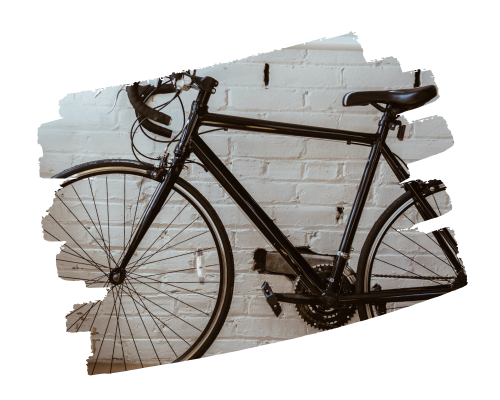Have you Ever scratched your head, wondering how much a quality road bike should weigh? You’re not alone on this one! Hi there, I’m Paul Zaldivar, and if there’s one thing I know like the back of my hand after nearly a decade of triathlons, it’s that cycling is my jam.
But here’s the kicker: I was confused when picking out the perfect road bike based on its weight. Now, you might be thinking, “Does it really matter? It’s just a couple of pounds more or less, right?” And I hear you. It seems like such a small detail, but it can make a difference.
Whether you’re a seasoned cyclist or just starting, the weight of your road bike can impact everything from your speed to how you handle those tight turns and steep climbs.
In this comprehensive guide, we’re diving deep into the nitty-gritty of road bike weights, breaking down the average benchmarks, the role of materials and bike types, and how these factors play into finding the right balance for your cycling needs.
So, if you’ve been losing sleep over how to choose the best road bike based on its weight, or if you’re just curious to know more, you’ve come to the right place.
Let’s end the guessing game and get down to the facts.
Ready? Let’s begin!
Table of Contents
Understanding the Variability in Road Bike Weight

Ever wondered why road bikes come in such a wide range of weights? It’s not just about making bikes for the featherweights and the heavy hitters; there’s a science behind it!
Breaking Down the Average: The 8.5 kg Benchmark.
On average, a road bike is about 8.5 kg (around 18.7 lbs for those who hate doing the math in their heads). But hey, that’s just an average. Road bikes can vary quite a bit depending on what you’re after.
- Take the Merida Scultura 9000 LTD, for example; it’s a real lightweight champion at just 4.55 kg (or 10 lbs if you prefer).
- On the other end of the scale, the Schwinn Paramount PDG 70 tips the scales at a hefty 14.5 kg (32 lbs).
That’s quite a difference, right? And all these numbers are not just pulled out of a hat; data from various sources and surveys back them.
Type and Size: Major Determinants of Bike Weight
So, what gives? Well, it’s all about the type and size of the bike. Different strokes for different folks, as they say. A typical road bike could weigh anywhere between 7.3 kg (16 lbs) to 9.1 kg (20 lbs), while a gravel bike might range from 9.1 kg (20 lbs) to 11.3 kg (25 lbs).
It’s not just about weight; it’s about finding the right fit for your riding style.
- Want to go fast? A lighter bike is for you.
- Prefer comfort over speed? A few extra pounds is a good thing.
Material Matters: How Frame and Component Choices Affect Weight
Now, let’s talk materials. The frame and components can make a huge difference.
- Carbon fiber is the go-to for performance seekers – lightweight and strong, but watch out for your wallet. It’s pricey.
- Aluminum? It’s more affordable but a bit on the heavier side.
- Steel is sturdy, comfortable, and has a classic vibe, but it’s not winning any lightweight competitions.
- Titanium offers an excellent middle ground.
- Magnesium? Well, it’s rare, but it’s super light.
Balancing Act: Finding the Right Combination for Your Needs
Finding the perfect road bike is like finding the perfect pair of jeans; it’s all about balance.
Consider your riding style, experience, terrain, distance, speed, comfort, safety, and, of course, your budget.
There’s no one-size-fits-all answer, but understanding the variability in road bike weight can help guide you to your perfect match.
So, are we clear? Road bike weights can be as varied as the cyclists riding them, but armed with the correct information, finding your perfect ride is a breeze.
Let’s pedal on to the next part of our journey, shall we?
The Impact of Bike Weight on Cycling Performance

Now, buckle up as we delve into the intriguing world of bike weight and its impact on your cycling performance. Trust us, it’s more than just a numbers game.
Speed Demons: How Weight Influences Velocity
Have you ever wondered why some bikes feel like they have rockets attached while others feel like they’re dragging an anchor? It’s all about the weight, baby! When we talk about speed, we’re talking about how much power and energy you need to overcome the pesky forces of gravity, friction, and air resistance.
- Lighter bikes can boost your power-to-weight ratio, giving you more speed for your effort.
- However, they can also increase your drag coefficient and rolling resistance, making you work harder to maintain that speed.
It’s like trying to ride fast with a parachute attached – not cool! So, while a lighter bike can be quicker off the mark, it’s not always the fastest over the long haul.
Handling and Control: Navigating the Trade-offs
Handling and control are the secret sauces to a great ride. It’s all about finding the sweet spot between stability, maneuverability, responsiveness, and comfort.
- A heavier bike might feel like it’s glued to the road, giving you a smooth ride, but try to make a quick turn, and it’s like steering a tank.
- On the flip side, a lighter bike can easily dance around corners but might feel jittery on rough roads.
It’s like trying to ride a pogo stick – fun for a minute, but not for a century ride.
Climbing and Acceleration: The Gravity of the Situation
Climbing hills with a heavy bike is like carrying a fridge on your back – not fun!
- A lighter bike can make ascending a breeze, but there’s a trade-off.
- When you’re zooming downhill or trying to pick up speed, a heavier bike has inertia on its side, helping you maintain momentum.
It’s like having a built-in turbo boost. A lighter bike? Not so much. You might feel like a feather going up, but you’ll feel like a leaf coming down.
Making Informed Choices: Understanding Performance Implications
So, what’s the bottom line? There’s no one-size-fits-all answer. The impact of bike weight on performance depends on a host of factors, including your body weight, fitness level, riding style, and the terrain.
It’s like trying to find the perfect pair of jeans – it depends on your preferences and priorities.
Making an informed choice about bike weight means weighing all these factors and finding the balance that works for you.
- Want to climb like a goat? Go light.
- Want to descend like a hawk? A bit of heft can help.
Just remember, it’s not about the bike; it’s about the rider. So, get out there, find your perfect ride, and let the good times roll!
Weighing the Pros and Cons: Lighter vs. Heavier Bikes

Alright, gearheads and speed demons, let’s dive into the age-old debate in the cycling world: lighter bikes versus heavier bikes. It’s like the “chicken or the egg” conundrum of the biking world, and we’re here to crack it open.
The Need for Speed: Advantages of Lighter Bikes
Ever wondered why some cyclists zoom past you on the hills like they’ve got rockets strapped to their bikes?
Chances are, they’re riding a lighter bike. These featherweight champs have a host of advantages:
- Speed: Lighter bikes allow for faster acceleration and increased agility.
- Climbing: With less gravitational pull, climbing hills becomes less challenging.
- Acceleration: Lighter bikes can feel like hitting the fast-forward button when you need a quick burst of speed.
Racers, climbers, and sprinters benefit immensely from these features as every millisecond counts for them. Lighter bikes amp up the power-to-weight ratio, giving you more speed with less effort.
Fragile but Fast: The Downsides of Going Light
But hold your horses! Lighter bikes aren’t without their drawbacks. Here are some considerations:
- Durability: Lighter bikes might be made with thinner materials, potentially leading to more damage.
- Comfort: These bikes might not provide the smoothest ride.
- Cost: Lighter bikes can be significantly more expensive in terms of initial investment and ongoing maintenance.
Commuters, tourers, and biking newbies take note! While a lighter bike might save you time, it might not save your wallet.
Built to Last: The Strengths of Heavier Bikes
Now, let’s switch gears and talk about the heavyweights in the biking world. Heavier bikes bring a lot to the table:
- Stability: Expect a smoother, more stable ride.
- Durability: These bikes are built to last, often requiring less frequent repairs.
- Affordability: Generally, heavier bikes are more wallet-friendly at the time of purchase and in the long run.
Emphasizing the reliability of heavier bikes. They might not be the fastest up a hill, but they’ll get you there reliably.
Weighing Your Wallet: Cost Implications of Bike Weight
When it comes to biking, the weight of your wallet is just as important as the weight of your bike. And guess what? The two are closely related.
- Lighter Bikes:
- It comes with a higher price tag.
- Require advanced, often expensive materials.
- It might need more frequent tune-ups, as explained by [Cyclists Hub].
- Heavier Bikes:
- It tends to be more budget-friendly.
- Offer robust durability, meaning less frequent maintenance.
So, there you have it, folks! The great bike weight debate.
Lighter bikes or heavier bikes? Speed or stability? Cost or comfort?
The choice is yours, but now you’re armed with the knowledge to make an informed decision based on your biking needs.
FAQ Section
Here’s a handy FAQ section to satisfy your curiosity and give you the lowdown on everything weight-related in road biking.
Road Bike Weight 101:
- How much does a road bike weigh in pounds?
- On average, a road bike tips the scales at around 18.7 lbs (8.5 kg). However, this can range anywhere from 16 lbs (7.3 kg) to 20 lbs (9.1 kg), depending on factors like type, size, materials, and components.
- How much does a Tour de France bike weigh?
- The International Cycling Union (UCI) rules state that a bike used in the Tour de France can’t be lighter than 15 lbs (6.8 kg). However, with additional gadgets like power meters and GPS devices, some bikes might weigh a smidgen more, averaging around 15.4 lbs (7 kg). [1]
Breaking It Down: Component Weights:
- How much does a road bike wheel weigh?
- Front wheels generally weigh around 1.5 lbs (0.7 kg), while the rear wheels are slightly heavier at about 2 lbs (0.9 kg). Of course, this can vary based on the wheel’s size, material, and design, with a typical range of 1.1 lbs (0.5 kg) to 2.2 lbs (1 kg) for front wheels and 1.5 lbs (0.7 kg) to 2.6 lbs (1.2 kg) for rear wheels.
- How much does a road bike helmet weigh?
- You’re looking at an average of around 0.55 lbs (0.25 kg) for a road bike helmet. The weight range typically lies between 0.44 lbs (0.2 kg) and 0.66 lbs (0.3 kg), varying in size, shape, style, and features.
- How much does a road bike frame weigh?
- The heart of your bike, the frame, averages about 2.2 lbs (1 kg). Depending on its size, material, design, and quality, you might find road bike frames weighing anywhere from 1.8 lbs (0.8 kg) to 3.3 lbs (1.5 kg).
Taking the Next Step
You’ve been on quite a journey, diving deep into the world of road bikes unraveling the mysteries of lighter and heavier rides. You’ve discovered the ins and outs, the pros and cons, and now find yourself at a crucial decision-making point.
You may be sitting there, thoughts racing, a little overwhelmed, but also armed with knowledge and ready to take action. “So many options, but which one is right for me?” you might wonder. It’s a big decision, and feeling this way is entirely okay.
It’s almost like standing at a crossroads, isn’t it?
- One path leads to the lightweight, speedy bikes that promise thrills and chills.
- The other path offers a solid, reliable companion ready to roll with the punches.
Choosing between these paths can feel exhilarating but daunting, like deciding between a rocket ship and a sturdy tank.
Now, take a deep breath. Do you feel that? That’s empowerment. You have the tools to make an informed decision. Your choice will reflect your needs, style, and cycling dreams.
Here’s your next step:
- Start small. Visit a local bike shop and get a feel for the bikes.
- Set a budget or start saving money.
- Jot down what you’ve learned today to help solidify your thoughts.
Remember, this is more than just choosing a bike. It’s about choosing adventure, freedom, and the thrill of the open road. So embrace the journey and let inspiration guide you.
When you finally hit the road, feeling the rush of the wind and the thrill of the ride, remember:
- You didn’t just choose a bike.
- You chose a lifestyle, a passion, and unparalleled freedom.
Give yourself a round of applause. You’ve earned it. Now, let’s hit the road together. Your next grand adventure is just a pedal away!

